Country
code
Lombardy
Crash of a SCAN-30 Super Widgeon off Manerba di Garda
Date & Time:
Mar 29, 2005 at 1441 LT
Registration:
OE-FWS
Survivors:
Yes
Schedule:
Salzburg - Lake Garda
MSN:
30
YOM:
1949
Crew on board:
1
Crew fatalities:
Pax on board:
1
Pax fatalities:
Other fatalities:
Total fatalities:
0
Captain / Total hours on type:
130.00
Aircraft flight hours:
3875
Circumstances:
The twin engine aircraft departed Salzburg Airport at 1242LT on a private flight to the Lake Garda (Lago di Garda). Upon landing off Manerba di Garda, the aircraft went out of control, plunged and sank. Both occupants evacuated safely while the aircraft sank by a depth of about 120 metres.
Probable cause:
It is believed that the loss of control upon landing was the consequence of the combination of a poor management of the factor P on part of the pilot-in-command, and microbursts. However, a technical problem was not ruled out.
Final Report:
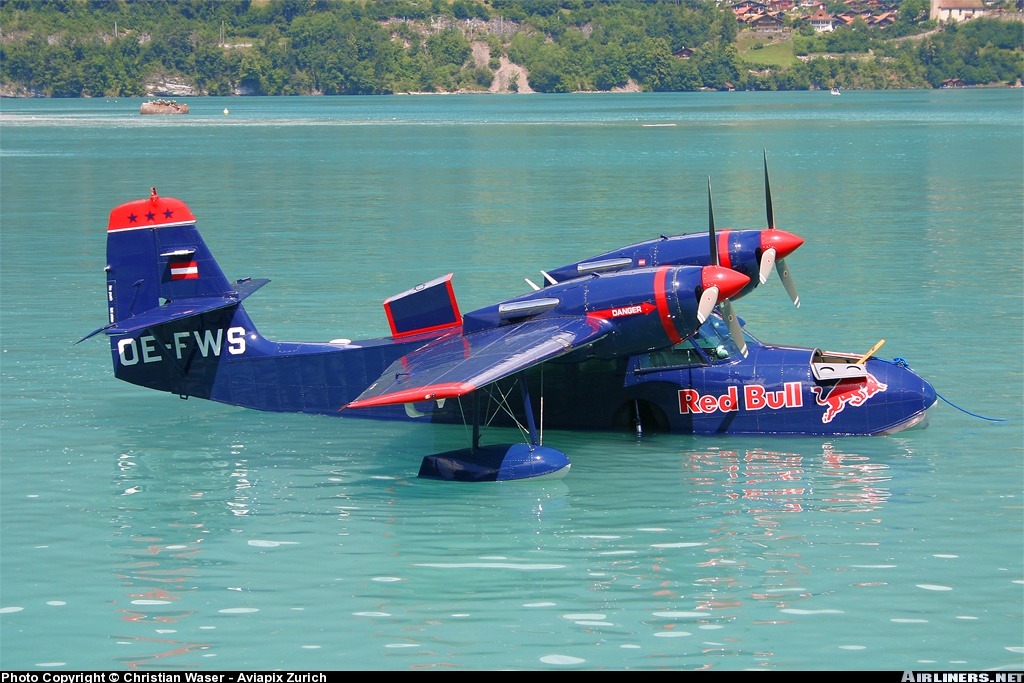


Crash of a Canadair CL-415-6B11 in Esine
Date & Time:
Aug 16, 2003 at 1548 LT
Registration:
I-DPCN
Survivors:
Yes
Schedule:
Verona - Verona
MSN:
2008
YOM:
1995
Flight number:
Tanker 9
Crew on board:
2
Crew fatalities:
Pax on board:
0
Pax fatalities:
Other fatalities:
Total fatalities:
0
Captain / Total hours on type:
3500.00
Copilot / Total hours on type:
400
Aircraft flight hours:
1186
Circumstances:
The aircraft was dispatched over the region of Esine to fight a forest fire under call sign Tanker 9. The area under fire was located on the southern slope of the Val Camonica, about 8 NM northeast from Lake Iseo. While approaching the zone to be treated, the aircraft struck trees and crashed on the mountain slope. Both pilots were injured, one seriously, and the aircraft was destroyed.
Probable cause:
The cause of the accident is attributable to the human factor and can be identified in the impact of the aircraft against certain trees following the setting of an inadequate escape manoeuvre.
The following causal factors may have contributed to the dynamics of the accident:
- The crew's failure to strictly comply with the Operator's Manual of Operations, which provided that the route of attack and escape should not be made uphill, unless there were very limited differences in level that could be overcome without power fluctuations,
- The failure to carry out, as a precautionary measure, since the trajectory of the attack route has changed (from descending to ascending), a new reconnaissance with subsequent briefing by the crew, in order to properly assess the different perspective of all the elements of interest (orography, escape route, etc..), even if the Operating Manual provided for a new reconnaissance by the crew with a subsequent briefing only in the case of a different target, even within the same fire, not even if the target had remained unchanged, but had changed the trajectory of the attack,
- The attack to the fire in unstabilized conditions, therefore not in line with what is previewed from the operating manual, even if the Operating Manual provided for a new reconnaissance by the crew with a subsequent briefing only in the case of a different target, even within the same fire, not even if the target had remained unchanged, but had changed the trajectory of the attack,
- The attack to the fire in not stabilized conditions, therefore not in line with what is previewed from the operating manual;
- The existence of communication problems within the cockpit, deriving from the fact that there was no information flow between the co-pilot (depositary of the information necessary for the assumption of the most appropriate operational decisions) and the commander, responsible for the final decisions; in this regard, it should be noted that radio communications with the DOCFS were made by the co-pilot in Italian, as the latter was not known by the commander, of Canadian nationality,
- The significant difference in experience and age between the two crew members, with possible negative effects in terms of crew coordination,
- The presence of critical points in the operating manuals, partly eliminated after the accident,
- The presence of locally significant turbulence.
The following causal factors may have contributed to the dynamics of the accident:
- The crew's failure to strictly comply with the Operator's Manual of Operations, which provided that the route of attack and escape should not be made uphill, unless there were very limited differences in level that could be overcome without power fluctuations,
- The failure to carry out, as a precautionary measure, since the trajectory of the attack route has changed (from descending to ascending), a new reconnaissance with subsequent briefing by the crew, in order to properly assess the different perspective of all the elements of interest (orography, escape route, etc..), even if the Operating Manual provided for a new reconnaissance by the crew with a subsequent briefing only in the case of a different target, even within the same fire, not even if the target had remained unchanged, but had changed the trajectory of the attack,
- The attack to the fire in unstabilized conditions, therefore not in line with what is previewed from the operating manual, even if the Operating Manual provided for a new reconnaissance by the crew with a subsequent briefing only in the case of a different target, even within the same fire, not even if the target had remained unchanged, but had changed the trajectory of the attack,
- The attack to the fire in not stabilized conditions, therefore not in line with what is previewed from the operating manual;
- The existence of communication problems within the cockpit, deriving from the fact that there was no information flow between the co-pilot (depositary of the information necessary for the assumption of the most appropriate operational decisions) and the commander, responsible for the final decisions; in this regard, it should be noted that radio communications with the DOCFS were made by the co-pilot in Italian, as the latter was not known by the commander, of Canadian nationality,
- The significant difference in experience and age between the two crew members, with possible negative effects in terms of crew coordination,
- The presence of critical points in the operating manuals, partly eliminated after the accident,
- The presence of locally significant turbulence.
Final Report:

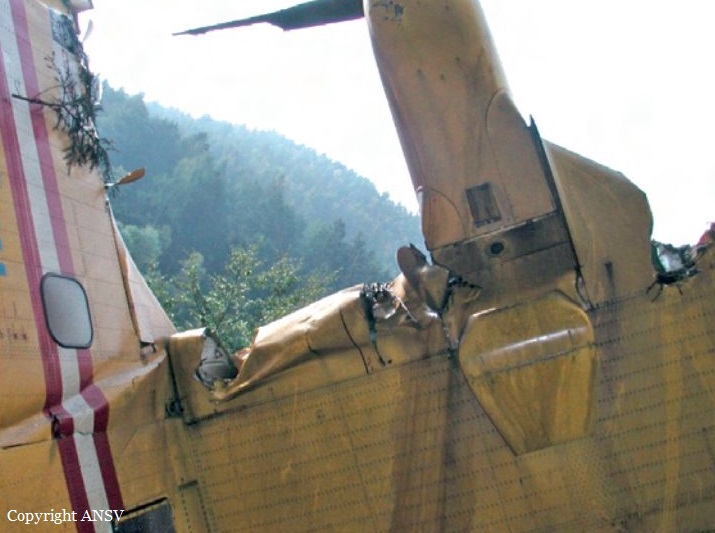
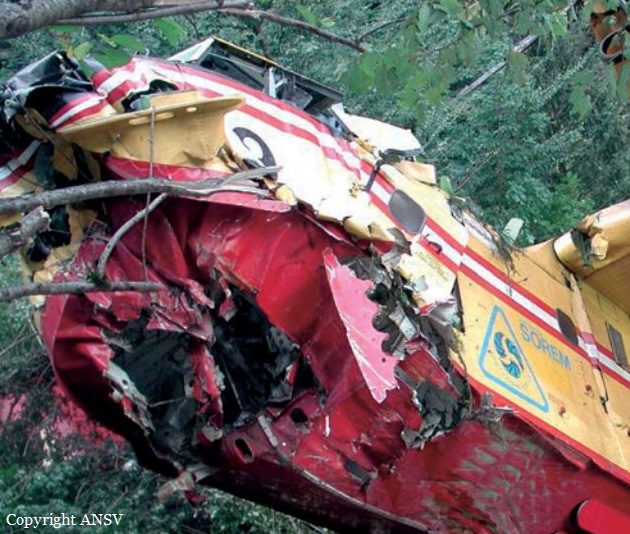
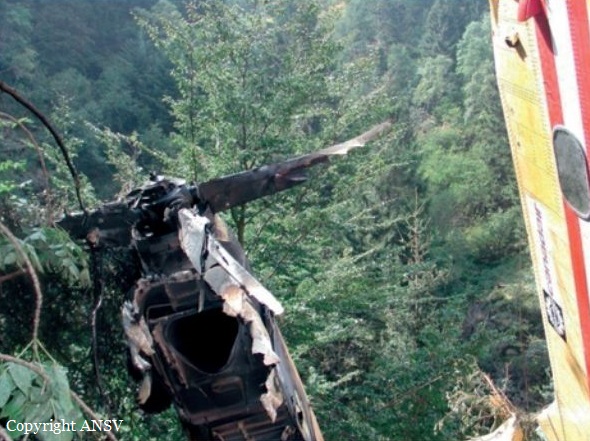
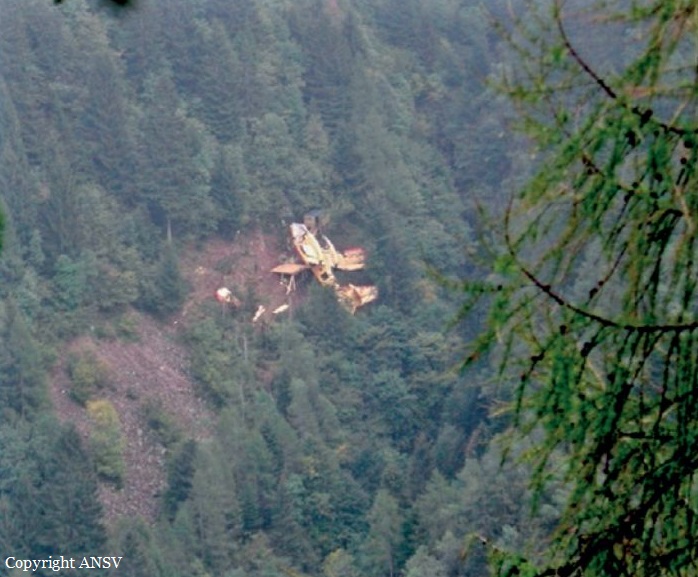
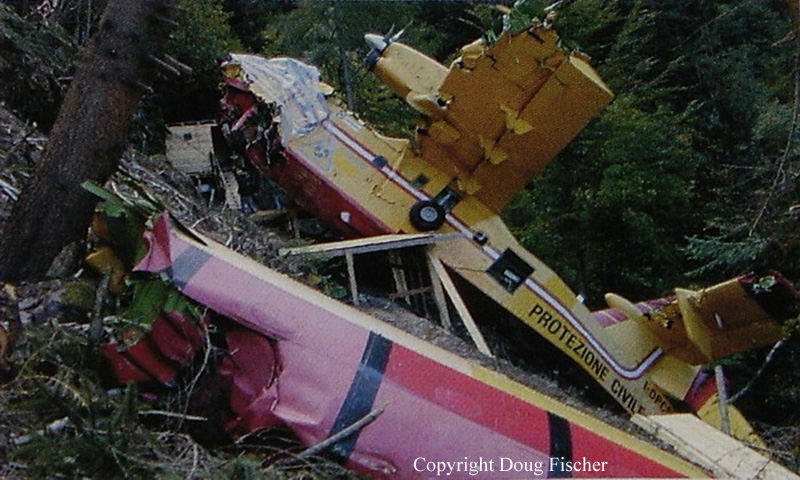
Crash of a Learjet 45 in Milan: 2 killed
Date & Time:
Jun 1, 2003 at 1526 LT
Registration:
I-ERJC
Survivors:
No
Schedule:
Milan - Genoa - Amsterdam
MSN:
45-093
YOM:
2000
Flight number:
ERJ1570
Crew on board:
2
Crew fatalities:
Pax on board:
0
Pax fatalities:
Other fatalities:
Total fatalities:
2
Captain / Total hours on type:
544.00
Copilot / Total hours on type:
14
Aircraft flight hours:
931
Aircraft flight cycles:
890
Circumstances:
The aircraft departed Milan-Linate Airport on a positioning flight to Genoa to pick up passengers for Amsterdam. Shortly after takeoff from runway 36R, while in initial climb, the aircraft collided with a flock of pigeons that struck both engines. The crew declared an emergency and reported technical problems without giving any other details. He was cleared for an immediate return and initiated a turn to the east. One minute and 25 seconds after takeoff, the aircraft entered an uncontrolled descent and crashed on a factory located 750 metres southeast from the runway 36R threshold. The aircraft was totally destroyed by impact forces and a post crash fire and both pilots were killed.
Probable cause:
The event, triggered by a multiple impact with birds during take-off, was caused by the loss of control in flight of the aircraft, due to an aerodynamic stall during the return to the departure airport, which could not be recovered due to the reduced altitude available.
The following factors contributed to the event:
- The non-implementation of the procedure provided for in the Flight Manual for engine failure after V1, with particular reference to configuration control (undercarriage and flaps), thrust lever management, definition and achievement of safety altitude, maintenance of expected speeds,
- The lack of CRM, already detectable in the ground procedures phase, but significantly worsened as a result of the emergency,
- The lack of experience of FO, on its first flight of line training on the type of aircraft,
- The inadequacy of the measures and of the bird control activity in the manoeuvring area.
The following factors contributed to the event:
- The non-implementation of the procedure provided for in the Flight Manual for engine failure after V1, with particular reference to configuration control (undercarriage and flaps), thrust lever management, definition and achievement of safety altitude, maintenance of expected speeds,
- The lack of CRM, already detectable in the ground procedures phase, but significantly worsened as a result of the emergency,
- The lack of experience of FO, on its first flight of line training on the type of aircraft,
- The inadequacy of the measures and of the bird control activity in the manoeuvring area.
Final Report:
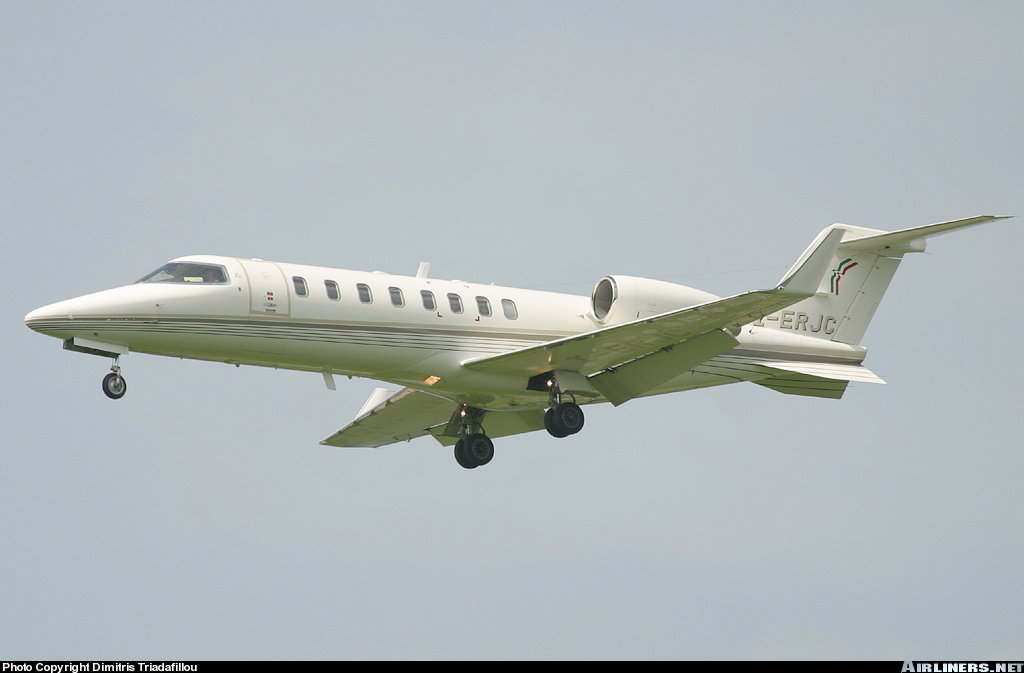
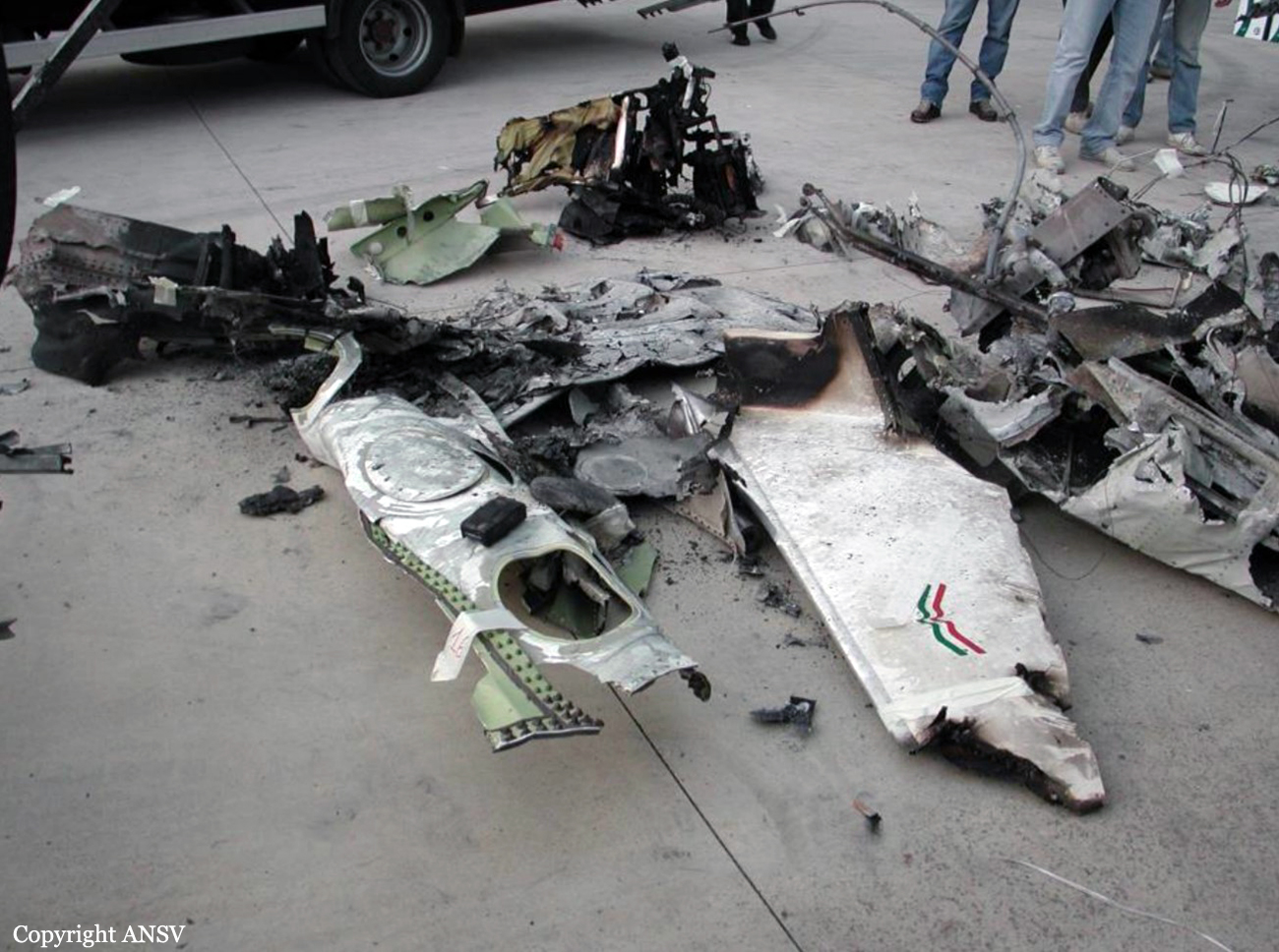



Crash of a Beechcraft A60 Duke in Jerago con Orago: 4 killed
Date & Time:
Aug 16, 2002 at 1542 LT
Registration:
HB-GFA
Survivors:
No
Schedule:
Nice - Locarno
MSN:
P-172
YOM:
1971
Crew on board:
1
Crew fatalities:
Pax on board:
3
Pax fatalities:
Other fatalities:
Total fatalities:
4
Aircraft flight hours:
1929
Circumstances:
The twin engine aircraft departed Nice-Côte d'Azur Airport on a flight to Locarno, Ticino, with four people on board. While cruising over Milan at an altitude of 10,000 feet, the pilot was invited to change his frequency and to contact Locarno Tower. Forty-six seconds later, he declared an emergency and informed ATC that he lost an engine. He was cleared to descent for a landing on either runway 35L or 35R but the aircraft continued to the north so he was later cleared to land on either runway 17L or 17R. Suddenly, the aircraft entered an uncontrolled descent then nosed down and crashed in a near vertical attitude in a wooded area located in Jerago con Orago, about 8 km northeast of Milan-Malpensa Airport. The aircraft was totally destroyed by impact forces and all four occupants were killed. There was no fire.
Probable cause:
It was determined that the right engine failed in flight, followed shortly later by the left engine. This was the consequence of a poor management of the fuel system on part of the pilot, especially regarding the fuel mixture that was not sufficiently rich. The pilot failed to maintain a sufficient speed and the aircraft stalled from a height that did not allow him to expect recovery.
Final Report:
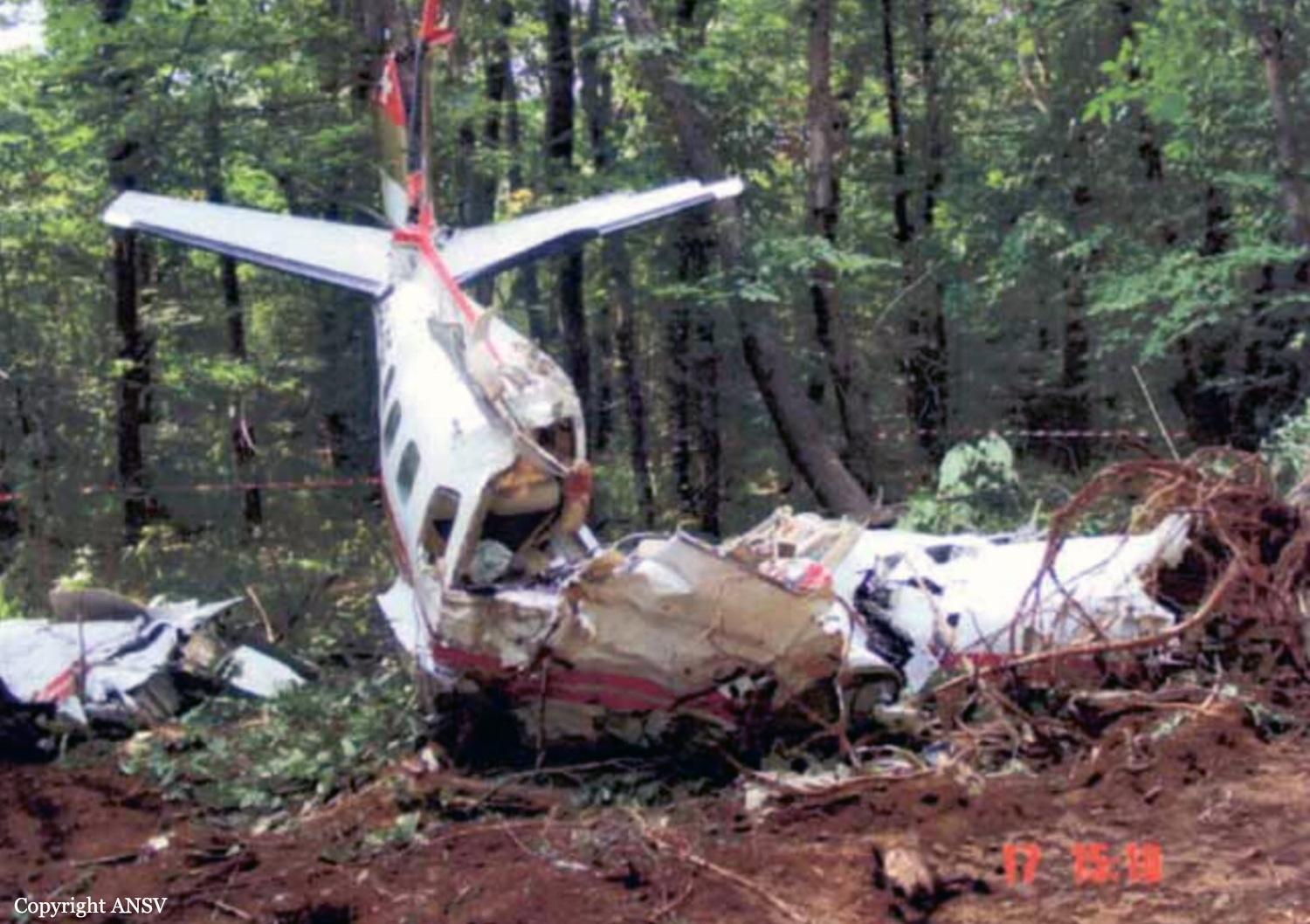
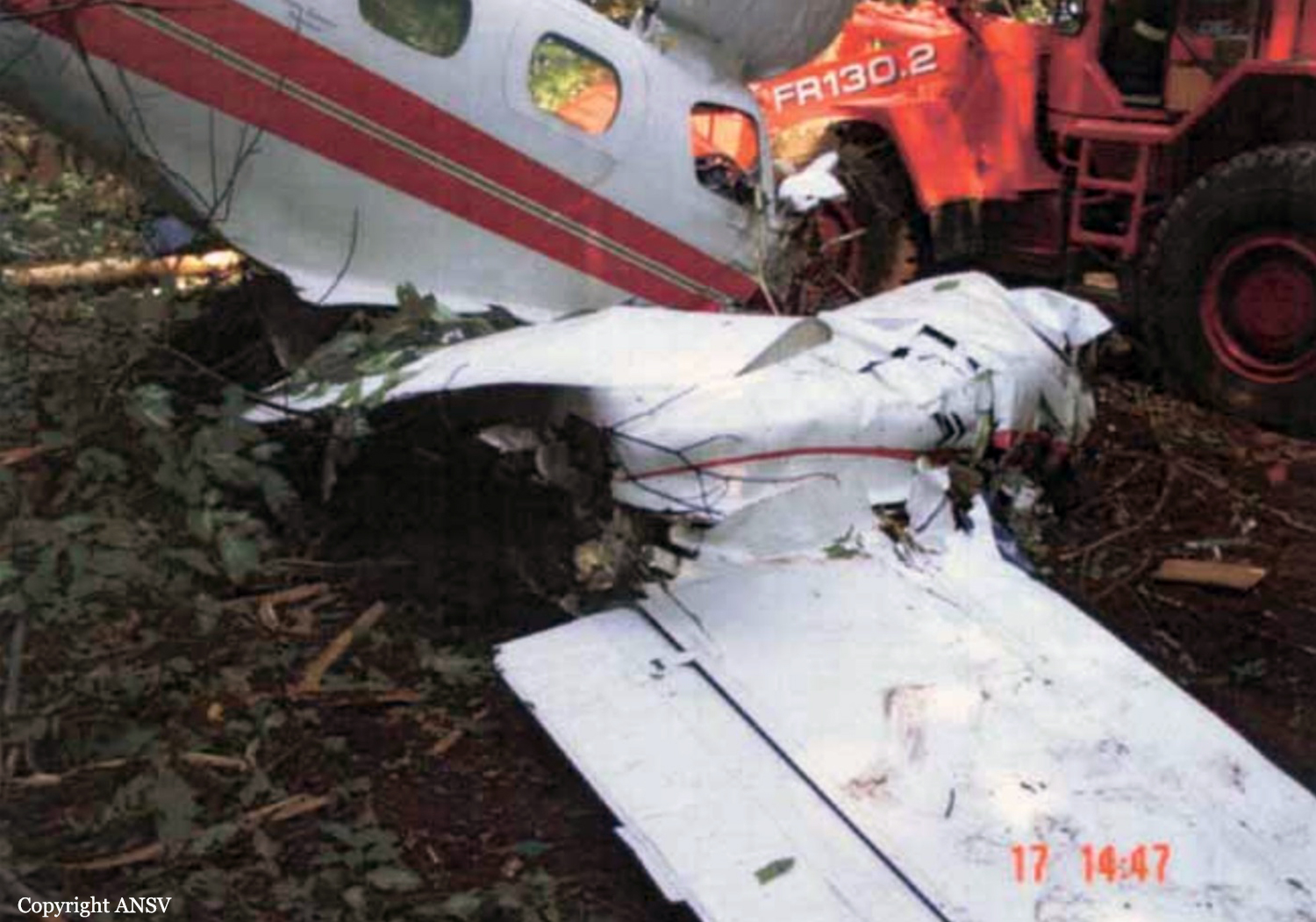


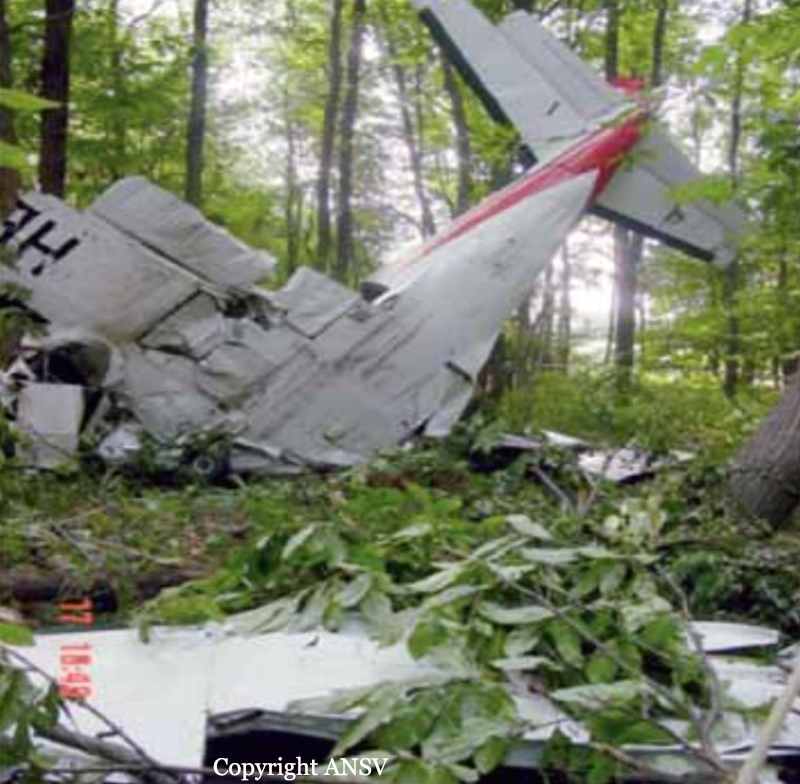
Crash of a Piper PA-31T Cheyenne I in Brescia
Date & Time:
Apr 12, 2002
Registration:
I-SASA
Survivors:
Yes
MSN:
31-8004021
YOM:
1980
Crew on board:
0
Crew fatalities:
Pax on board:
0
Pax fatalities:
Other fatalities:
Total fatalities:
0
Circumstances:
Crashed upon takeoff for unknown reasons. There were no casualties.

Crash of a Cessna 525A CitationJet Cj2 in Milan: 4 killed
Date & Time:
Oct 8, 2001 at 0810 LT
Registration:
D-IEVX
Survivors:
No
Schedule:
Cologne - Milan - Paris
MSN:
525A-0036
YOM:
2001
Crew on board:
2
Crew fatalities:
Pax on board:
2
Pax fatalities:
Other fatalities:
Total fatalities:
4
Captain / Total hours on type:
2400.00
Copilot / Total hours on type:
2000
Aircraft flight hours:
28
Aircraft flight cycles:
20
Circumstances:
A brand new Cessna 525A CitationJet 2, D-IEVX, arrived at Milan-Linate following a flight from Köln. The Cessna was to carry out a return flight to Paris-Le Bourget, carrying two pilots, a Cessna sales manager and a prospective customer. The plane arrived at 06:59 and was taxied to the General aviation apron, also known as 'West apron'. It was a foggy morning at Milan and one of the passenger flights parked on the North apron was SAS MD-87 "Lage Viking" which was being prepared for flight SK686 to Copenhagen, scheduled to depart at 07:35. At 07:41, the pilot of the MD-87 contacted Linate Ground Control for his engine start clearance, as the boarding of 104 passengers had been completed. The Ground controller cleared the pilot to start engines and advised that the slot time for takeoff of the flight was at 08:16. Thirteen minutes later flight 686 was cleared to taxi to runway 36R: "Scandinavian 686 taxi to the holding position Cat III, QNH 1013 and please call me back entering the main taxiway." A few minutes later, the Cessna pilot requested permission to start the engines. The ground controller then gave start-up clearance. The ground controller then requested flight 686 to contact the Tower controller. From this moment on the crew of the MD-87 and the crew of the Cessna were tuned on two different radio frequencies. At 08:05 the pilots of the Cessna received taxi clearance: "Delta Victor Xray taxi north via Romeo 5, QNH 1013, call me back at the stop bar of the ... main runway extension." The pilot acknowledged by saying: "Roger via Romeo 5 and ... 1013, and call you back before reaching main runway." The Cessna started to taxi from the General Aviation parking position, following the yellow taxi line. After reaching the position where the yellow taxi line splits into two diverging directions, the pilot erroneously took the taxi line to right and entered taxiway R6. At 08:09 the Ground controller cleared the Cessna to continue its taxi on the North apron. At the same time the Tower controller cleared the MD-87 for takeoff: "...Scandinavian 686 Linate, clear for take off 36, the wind is calm report rolling, when airborne squawk ident." The pilot advanced the throttles and acknowledged the clearance: "Clear for takeoff 36 at when...airborne squawk ident and we are rolling, Scandinavian 686." When the MD-87 was speeding down the runway, the Cessna crossed the runway holding sign and entered the active runway 18L/36R. At 08.10:21 the nose landing gear of the MD-87 had left the ground and main gears were extending the shock absorbers but the main wheels were still on the ground at an airspeed of 146 knots (270,5 km/h). At that moment the MD-87 crew probably saw a glimpse of the Cessna through the fog and reacted with additional large nose-up elevator. At that moment the MD-87 collided with the CitationJet. The right wing of the MD-87 sustained damage at the leading edge and the right hand main landing gear leg broke off. It damaged the right flap and struck the no. 2 engine which then separated from the pylon. The pilot of the MD-87 gradually advanced the throttles and then the aircraft was airborne for a total of 12 seconds, reaching an estimated height of about 35 feet (11 meters). The left hand engine suffered a noticeable thrust reduction as a result of debris ingestion, which became insufficient to sustain flight. The airspeed had increased up to 166 knots (307,6 km/h), but the MD-87 descended abruptly making contact with the runway with the left hand maingear, the truncated right hand maingear leg and the tip of the right hand wing. Prior to touch down the pilot reduced engine thrust and after ground contact the engine reverse levers were activated and deployed (on the left hand engine only). Maximum available reverse thrust was selected and the brakes applied. The plane skidded past the grass overrun area, across a service road, crashing sideways into a baggage handling building, which partly collapsed. This building was located 20 m/67 feet to the right of the runway, and 460 m/1500 feet from the runway end. Both pilots were German citizens while both passengers were respectively Mr. Stefano Romanello, representative for Cessna Aircraft in Europe and Mr. Luca Fossati, President of the Star food group.
Probable cause:
After analysis of evidence available and information gathered, it can be assumed that the immediate cause for the accident has been the runway incursion in the active runway by the Cessna. The obvious consideration is that the human factor related action of the Cessna crew - during low visibility conditions - must be weighted against the scenario that allowed the course of events that led to the fatal collision; equally it can be stated that the system in place at Milano Linate airport was not geared to trap misunderstandings, let alone inadequate procedures, blatant human errors and faulty airport layout.
The following list highlights immediate and systemic causes that led to the accident:
- The visibility was low, between 50 and 100 meters;
- The traffic volume was high;
- The lack of adequate visual aids;
- The Cessna crew used the wrong taxiway and entered the runway without specific clearance;
- The failure to check the Cessna crew qualification;
- The nature of the flight might have exerted a certain pressure on the Cessna crew to commence the flight despite the prevailing weather conditions;
- The Cessna crew was not aided properly with correct publications (AIP Italy - Jeppesen), lights (red bar lights and taxiway lights), markings (in deformity with standard format and unpublished, S4) and signs (non existing, TWY R6) to enhance their situational awareness;
- Official documentation failing to report the presence of unpublished markings (S4, S5, etc) that were unknown to air traffic controllers, thus preventing the ATC controller from interpreting the unambiguous information from the Cessna crew, a position report mentioning S4;
- Operational procedures allowing high traffic volume (high number of ground movements) in weather conditions as were current the day of the accident (reduced visibility) and in the absence of technical aids;
- Radio communications were not performed using standard phraseology (read back) or were not consistently adhered to (resulting in untraced misunderstandings in relevant radio communications);
- Radio communications were performed in Italian and English language;
- Air Traffic Control (ATC) personnel did not realize that Cessna was on taxiway R6;
- The ground controller issued a taxi clearance towards Main apron although the reported position S4 did not have any meaning to him;
- Instructions, training and the prevailing environmental situation prevented the ATC personnel from having full control over the aircraft movements on ground.
Furthermore:
- The aerodrome standard did not comply with ICAO Annex 14; required markings, lights and signs did either not exist (TWY R6) or were in dismal order and were hard to recognize especially under low visibility conditions (R5-R6), other markings were unknown to operators (S4);
- No functional Safety Management System was in operation;
- The competence maintenance and requirements for recent experience for ATC personnel did not fully comply with ICAO Annex 1;
- The LVO implementation by ENAV (DOP 2/97) did not conform with the requirements provided in the corresponding and referenced ICAO DOC 4976.
The combined effect of these factors, contemporaneously present on the 8th of October 2001 at Milano Linate, have neutralized any possible error corrective action and therefore allowed the accident.
The following list highlights immediate and systemic causes that led to the accident:
- The visibility was low, between 50 and 100 meters;
- The traffic volume was high;
- The lack of adequate visual aids;
- The Cessna crew used the wrong taxiway and entered the runway without specific clearance;
- The failure to check the Cessna crew qualification;
- The nature of the flight might have exerted a certain pressure on the Cessna crew to commence the flight despite the prevailing weather conditions;
- The Cessna crew was not aided properly with correct publications (AIP Italy - Jeppesen), lights (red bar lights and taxiway lights), markings (in deformity with standard format and unpublished, S4) and signs (non existing, TWY R6) to enhance their situational awareness;
- Official documentation failing to report the presence of unpublished markings (S4, S5, etc) that were unknown to air traffic controllers, thus preventing the ATC controller from interpreting the unambiguous information from the Cessna crew, a position report mentioning S4;
- Operational procedures allowing high traffic volume (high number of ground movements) in weather conditions as were current the day of the accident (reduced visibility) and in the absence of technical aids;
- Radio communications were not performed using standard phraseology (read back) or were not consistently adhered to (resulting in untraced misunderstandings in relevant radio communications);
- Radio communications were performed in Italian and English language;
- Air Traffic Control (ATC) personnel did not realize that Cessna was on taxiway R6;
- The ground controller issued a taxi clearance towards Main apron although the reported position S4 did not have any meaning to him;
- Instructions, training and the prevailing environmental situation prevented the ATC personnel from having full control over the aircraft movements on ground.
Furthermore:
- The aerodrome standard did not comply with ICAO Annex 14; required markings, lights and signs did either not exist (TWY R6) or were in dismal order and were hard to recognize especially under low visibility conditions (R5-R6), other markings were unknown to operators (S4);
- No functional Safety Management System was in operation;
- The competence maintenance and requirements for recent experience for ATC personnel did not fully comply with ICAO Annex 1;
- The LVO implementation by ENAV (DOP 2/97) did not conform with the requirements provided in the corresponding and referenced ICAO DOC 4976.
The combined effect of these factors, contemporaneously present on the 8th of October 2001 at Milano Linate, have neutralized any possible error corrective action and therefore allowed the accident.
Final Report:




